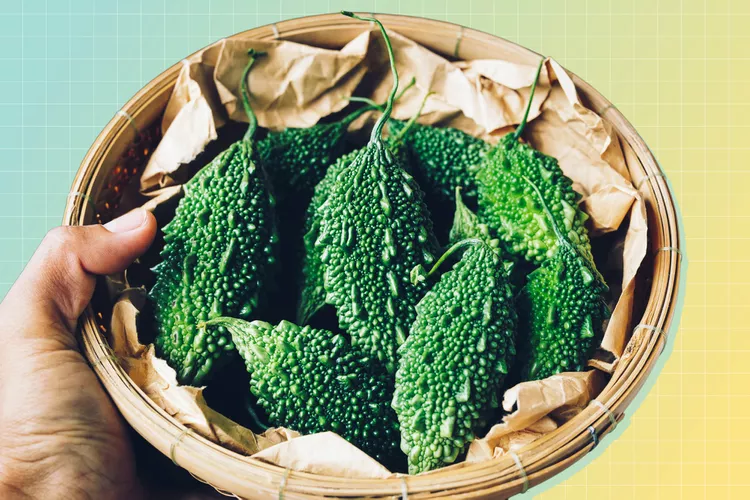Contents
Health Benefits of Palo Azul
Palo Azul Eysenhardtia polystachya, the scientific name for palo azul, is a tiny tree or shrub that is indigenous to Mexico and southeast North America.
It has leaves that split into smaller leaflets and is about a meter high.One Traditionally, the rough, scaly, reddish-brown bark is soaked in water to produce an infusion that has an earthy flavor and an iridescent blue color. Palo azul’s name, which means “blue stick” in Spanish, was chosen for this reason.
Indigenous peoples have long utilized palo azul in their folk medicine as a natural treatment for inflammatory, digestive, and urinary tract disorders. Additionally, its antibacterial and wound-healing qualities made it valuable.
The potential of palo azul to promote renal health, digestive regularity, blood sugar control, and pain management has drawn attention in recent years. Researchers are looking into its potential health benefits as a result of this rising interest.
May Improve Kidney Health

Known as “kidney wood” palo azul contains a variety of plant chemicals that may promote kidney function and help prevent kidney stones.
Research on the health benefits of Palo Azul has revealed that the plant is abundant in fatty acids and flavonoids. One Animal studies have shown that these chemicals‘ antioxidant, anti-inflammatory, and diuretic qualities help prevent kidney stone crystals from forming and growing, while further human study is required.
Cua-Pech KG, Pech-Aguilar AG, Sansores-España D. Review of preclinical data, bioactive substances, and molecular mechanisms of plants used in Mexican traditional medicine to treat urolithiasis.
In order to fight off dangerous reactive oxygen species—unstable chemicals that lead to oxidative stress, or an imbalance between free radicals and antioxidants in your body—and destroy healthy kidney cells, the antioxidant and anti-inflammatory properties are essential. Palo azul helps produce an environment that prevents kidney stones from forming by shielding the kidneys from oxidative stress.
Palo azul’s diuretic qualities may also improve urine flow and stop electrolyte loss, assisting in the removal of toxins and substances that form crystals before they become big stones and endanger the kidneys.
May Provide Digestive Support
D-pinitol, an active chemical found in palo azul’s branches and leaves, may help ease gastrointestinal distress. Interestingly, D-pinitol is one of the main constituents of accounting for around 27% of its makeup.
Zapata-Morales JR, Arana-Argáez V, Alonso-Castro AJ, et al. A chemically standardized ethanol extract of the branches and leaves of Eysenhardtia polystachya (Ortega) Sarg. (Fabaceae) was studied pharmacologically and toxicologically. J. Ethnopharmacol.
According to research on animals, this natural substance may be just as successful in treating diarrhea as common medications like loperamide. Palo azul’s capacity to postpone the onset of diarrhea and stop the buildup of extra fluid in the large intestines is thought to be the cause of this effect.
But more investigation is required to completely grasp palo azul’s potential for treating and preventing diarrhea, especially involving humans.
May Reduce Joint Pain and Inflammation
Rheumatoid arthritis (RA) related joint discomfort and inflammation may be reduced by consuming .
An autoimmune disease known as rheumatoid arthritis (RA) develops when the immune system, which defends the body against foreign chemicals and pathogens, accidentally targets and destroys joint tissue.
The release of inflammatory chemicals known as cytokines, such as granulocyte-macrophage colony-stimulating factor (GM-CSF), interleukin (IL-6), and tumor necrosis factor-alpha (TNF-α), usually occurs in conjunction with this immunological dysfunction. These cytokines trigger the production of additional inflammatory chemicals nearby immune cells, which feeds a vicious cycle that deteriorates and compromises joint function. People who have RA therefore suffer from joint discomfort, stiffness, and edema.
The flavonoids in palo azul bark have been shown in experimental animal tests to have potent anti-inflammatory qualities and may lower the levels of pro-inflammatory cytokines TNF-α, IL-6, and GM-CSF in arthritic patients.Palo azul is also a powerful analgesic (pain-relieving) that helps lessen inflammatory joint discomfort, according to researchers.
More investigation is required to ascertain whether these anti-arthritic properties apply to people because the findings are based on animal models.
May Aid in Blood Sugar Regulation
Might help keep blood sugar (glucose) levels in check. Excess blood glucose can harm fats, raise reactive oxygen species levels, and impair the body’s capacity to make and use the hormone insulin, which decreases blood sugar levels.
Muñiz-Ramirez A, Garcia-Campoy A, and Garcia E. research of the Eysenhardtia genus from a phytochemical and pharmacological perspective Basel plants.
An animal study suggests that the flavonoids in palo azul may function as antioxidants to shield the body from the detrimental effects of reactive oxygen species on cells. Although the research was conducted on animals or is still in its early phases, additional studies have shown that palo azul also helps lower glucose levels and prevent the formation of AGEs.
Similar to other possible advantages of palo azul, further human studies are required to validate its capacity to control blood sugar levels.
How To Use Palo Azul
is frequently used as tea due to its subtle sweetness, woodsy flavor, and mildness. One or two pieces of bark, or roughly 10 grams of the branches and leaves, are traditionally needed to make palo azul tea. But the main component utilized to make the tea is the bark.
To prepare palo azul tea, simply do the following:
- Fill a pot with 1 gallon of spring water and bring it to a boil
- Add 1 ounce (oz) of palo azul bark to the boiling water
- Allow the bark to simmer for 20-30 minutes or until the liquid turns a deep amber color with a blue, fluorescent hue
- Strain the tea using a cheesecloth or fine mesh strainer to remove the bark and excess debris
- Pour the tea into a cup and enjoy it either hot or cold
- Refrigerate the remaining tea to preserve the plant compounds and antioxidants
Side Effects and Precautions
Despite being utilized for centuries, palo azul’s safety and effectiveness have not been thoroughly investigated by science. According to the scant study on animals, it is comparatively non-toxic when taken orally.
Meléndez-Camargo ME, Parada-Cruz B, Barbier OC, and Pablo-Pérez SS. In mouse models, the ethanolic extract of the bark and its fractions of Eysenhardtia polystachya (Ort.) sarg. exhibit antinociceptive activity and slow the course of rheumatoid arthritis.
It’s also a good idea to discuss any possible interactions between palo azul and any drugs you are taking with your healthcare provider because herbs can interact with medications.
It is advised to lower the dosage or frequency of consumption or stop using palo azul infusions if you do suffer unpleasant side effects like nausea or gastrointestinal distress.
A Quick Review
A shrub or tiny tree known as palo azul, or kidney wood, is traditionally soaked in water to make a blue, luminous tea that contains a number of healthful chemicals. These comprise D-pinitol, flavonoids, saponins, and tannins, all of which support the purported health benefits of
Kidney stone prevention, relief from diarrhea, decreased joint pain and inflammation, and better blood sugar regulation are a few possible advantages of drinking palo azul tea. Numerous research that emphasize the advantages of palo azul, however, were carried out on animals. Therefore, in order to completely prove its efficacy and validate the magnitude of its health advantages, further thorough human studies are required.
may be non-toxic and have few negative effects, according to limited studies, but you should always consult your doctor before including herbal medicines into your diet.








